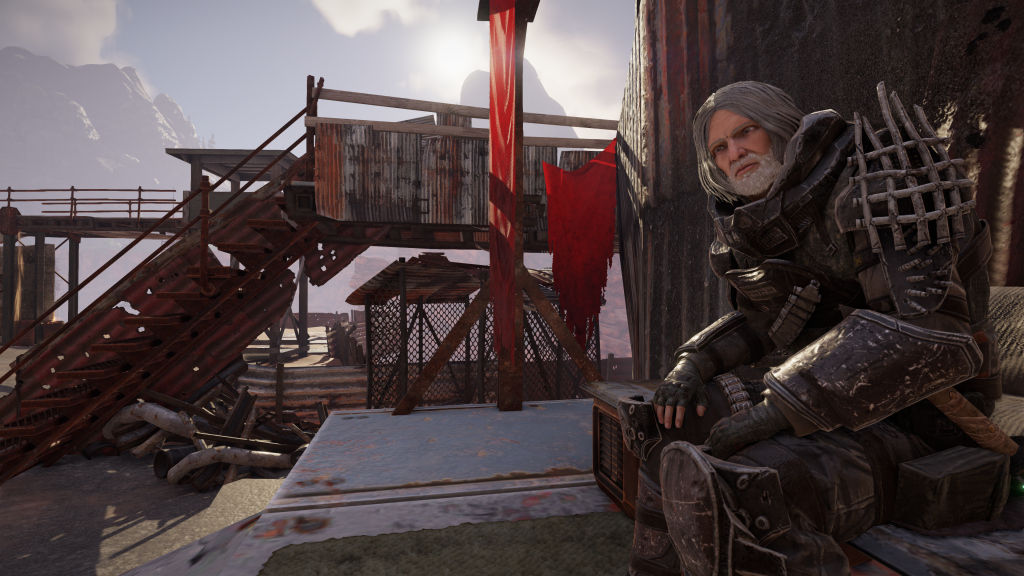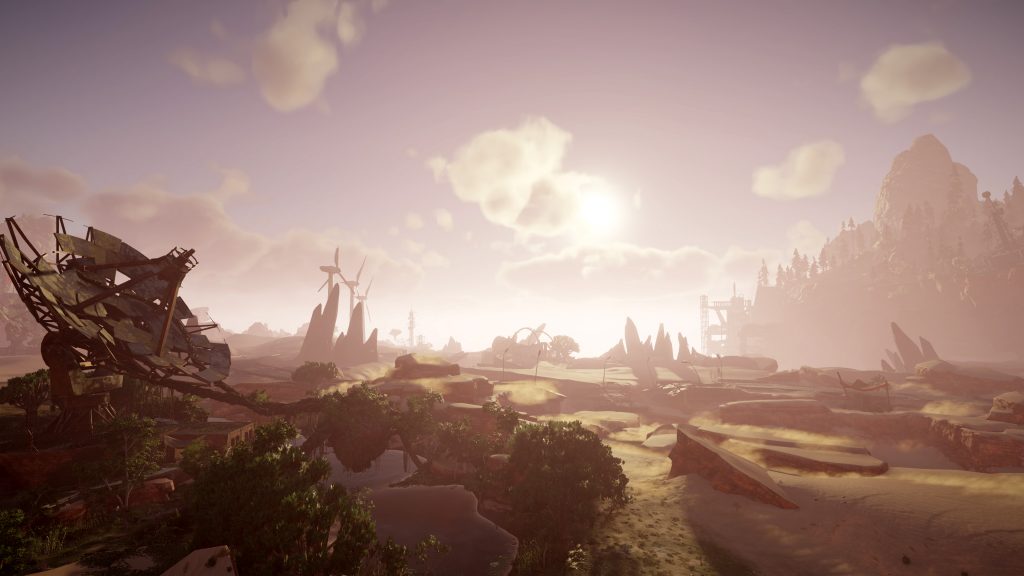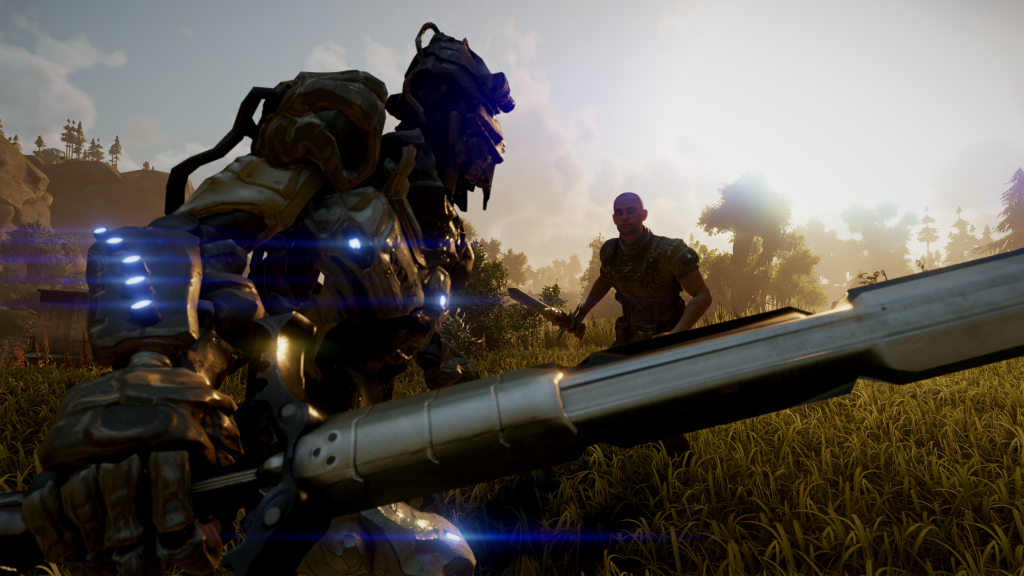Elex’s Freeform Nature & Open World is Set to Make it a True Contender
Elex could be Piranha Bytes’ Oblivion moment.
Piranha Bytes, the developers of upcoming RPG Elex, have been in the biz for 20 years now, originally forming up in 1997. The company is regarded by many as a cornerstone of a subgenre of role-playing games rarely mentioned, the European-RPG; tough games with steep learning curves, dark settings, and no fear of deploying a string of complex menus for the sake of consistency. Many people’s first experiences with these games are pockmarked with repeated, sudden deaths – but once you’ve learned the systems there’s something special there.
Many games fall into the sub-genre, and it’s silly to try and lock it to a geographical region, as it is with its ‘JRPG’ and ‘Western RPG’ cousins; but anyway, we’re not here to talk about the Summoner, Fable, Witcher, Souls, or Divinity series.
I would, however, like to touch on Bethesda’s Elder Scrolls series. The Elder Scrolls series was always open-world, featured its own deep takes on roleplaying game stats, and while not as punishing as other RPGs the earlier entries offered a chance to re-spec at the end of the tutorial – handy what with its character creation systems’ niches. While not as tough as most ‘ERPGs’ -for a start it was the first Elder Scrolls game where the world gained levels with the player- I still know a few friends who initially put down the game disappointed. For an example of the bounce-off from early Oblivion combat just Google ‘Killed by Rat Oblivion’ and have a look.
Oblivion, like Elex, is a release in the twentieth year of the developer’s lifespan, it reached a new console audience due to recent advent of a new wave of console tech, it did open world different than almost any other game at the time, and it had a whole bunch of calipers in it. Yes, calipers. I’ve built up this whole comparison just to get to talking about calipers.

My previous hands on time with the Elex, which you can read here, focused mostly on the game’s contrasting technology levels and combat; however, after playing through the first few hours of the game my opinions on the game’s strengths have shifted slightly.
After an asteroid collision wipes out almost all life on Magalan, the survivors bunch together based on their ideals, seeking to use the ruins of the old world in a different way than those who came before. The asteroid didn’t just bring death to the world, it also brought the curious -and titular- element Elex.
Few could use the technology that littered the wastes, although -as ever- people were quick to find a way to weaponise the scrap. Various factions rose; some purely chaotic and opportunistic, The Outlaws; some turned to a new god and sought to cleanse the world, The Clerics; others sought to return the world to a lush, natural paradise, The Berzerkers; while others sought to purge the other factions and through that reclaim Magalan, The Albs. Each of these treat Elex differently.
You’re an Alb, an evil sci-fi Spartan, raised from youth for murder. Made to consume Elex in order to tame and suppress your emotions. But, your time as a super-cool, space Terminator is short because before you even get to walk a tstep in their shoes your ship is shot out of the sky. An ambush is sprung. Your equipment pilfered. The special Alb Elex washed from your system.
It all starts in a washed out dell, ruined red-brick walls blocking most of your route, just across a nearby stream you can see a rat the size of a dog prowling between the bushes and collectible herbs. Climbing, ambling, and moving all feels a lot more natural than it did when I played an early build back in February. I still clipped along the uneven terrain a little whilst locked onto enemies, with the games animations for dodging and popping potions requiring a little bit more work before the game’s October release date, but normal walking traversal was massively improved.
Following the stream down the hill you find the ruins of one of your drones, the menus updating saying that your other drone may be salvageable and could join you as a companion – the first reference to companion characters that I believe I’ve seen since the game was first announced nearly two years ago. Beyond that you can that the water and world falls away, you’re atop a steep hill, and the world of Magalan -at least this area, Edan- is lush, blooming like a traditional fantasy title’s medieval world.

Ignoring the view, what stands in your way is a small manufactory, or station of sorts. Aside from an enemy rushing out at you it’s empty; a dark, dusty room filled with metal shelving units and various discarded, industrial equipment. By this point, building up to this little cabin with an amazing view and walls lined with toot, I’d already collected about 15/20 plants and herbs, as well as some weapons, and other small items. My inventory was filling up fast. Inside the little shack though, there were all sorts of little things to collect, and lockers to loot, cans of food, scraps of metal, the place was full of goodies. Rummaging through the game world regularly follows this pattern, industrial and formerly populated areas are rife with scraps and components to collect, while nature provides loot from malignant, twisted wildlife, and alchemy components in herbs, berries and more.
On the side in that room however, was a set of calipers. The strange tong things which every house in Oblivion seemed to feature at least two sets of; and which had clearly been outlawed by the time Bethesda’s next Elder Scrolls game had come to pass. I instantly spotted them, and for some reason went to grab them. I couldn’t. Elex’s vast inventory selection is seemingly built with light crafting, and trading in mind – no room for nonsense items. It’s an interesting proposition because, what with the game’s world, featuring vastly different environments, and also it’s interesting traversal options, there must be a deluge of items available around Magalan.
Before I reach the lower valley I’ve not just faced The Berzerker’s regrown world, Edan, but I’ve also been reunited with my jetpack – something I didn’t get to try out properly in my original play of the game. The jetpack is self recharging, and has enough capacity for about 6/7 seconds of solid burst, which is enough to climb about three stories, or -in several goes- practically any cliff in the world. It’s also extremely useful for avoiding fall damage or making those forward-leaping jumps which sometimes become very finicky in third person games. It does look… odd, although I still feel it’s probably one of the best implemented jetpacks in a third-person game that I’ve played. Mainly because of the great efforts that have clearly gone into building the game’s environment with the vertical axis in mind.
Reaching the valley below you are introduced to a recruiter for The Berzerkers. Despite the fact that the protagonist has been conditioned to believe them unredeemable savages you can actually have a decent conversation with them – gaining some hints for your next steps in the journey. It’s also made extremely clear that you were, until a few days ago, definitely one of the baddies.
The route to the Berzerkers’ town is lined with deadly distractions; exploring off route I came across several tangential paths each leading to places rife with loot and goodies. Resting reavers occupy those spaces though, and they will -at this early point in the game- kill you in a single hit. Dodging and diving around will allow you to best the raptors and giant rats which occupy some routes, but unless you have the patience and the timing of the saints you’ll not beat the reavers. Luckily, the game has a very generous checkpointing system – handy then, because outside of a loose main questline the game is almost entirely open to explore from the get-go.
In addition to that, everyone is expendable. If you wish to you can jetpack over the boundaries of most city and camp walls from outside, dropping down and killing off the neutral NPCs without even greeting the gate-guard.

Elex’s byword is definitely choice. With the option to join up to each of the major factions in the game always listed as a major feature – worth celebrating as in their existence they contradict each other. Each faction has their own outliers too; The Berzerkers might detest the idea of using Elex as anything other than mana to restore the planet, but an individual in their town makes it candidly known that they’re interested in relics from outside the wooden barricades. You can play as a complete outsider within the faction walls if you wish.
Choice, and by extension customisation, also comes from your decisions between the factions; the Clerics of Ignadon -who I’ve only seen corpses of so far- use mechs and hi-tech weapons, that’s unlikely to mesh well if you’re a member of the Outlaws with their conventional ballistic weapons, or a member of the Berzerkers, who fight with axe and bow. In the two play periods that I’ve had with the game I’ve fought with laser-rifles, swords, bows, and a machine gun. Each time I’ve had people comment that the weapons aren’t like those in the area.
With a little polish, Elex could be Piranha Bytes’ Oblivion moment; with jetpack-boosts rather than dungeon delves, and with entire faction towns and hubs rather than hidden-away guild houses. Oblivion was a turning point for Bethesda, their first proper embracing of the mainstream console market; Elex easily has enough content, gusto, and variety to deliver a similar, sweeping experience when it launches later this year.
Elex launches on October 17th 2017 for PC, PS4 & Xbox One.
All images provided by Dead Good Media, on behalf of THQ Nordic.



















Comments are closed.